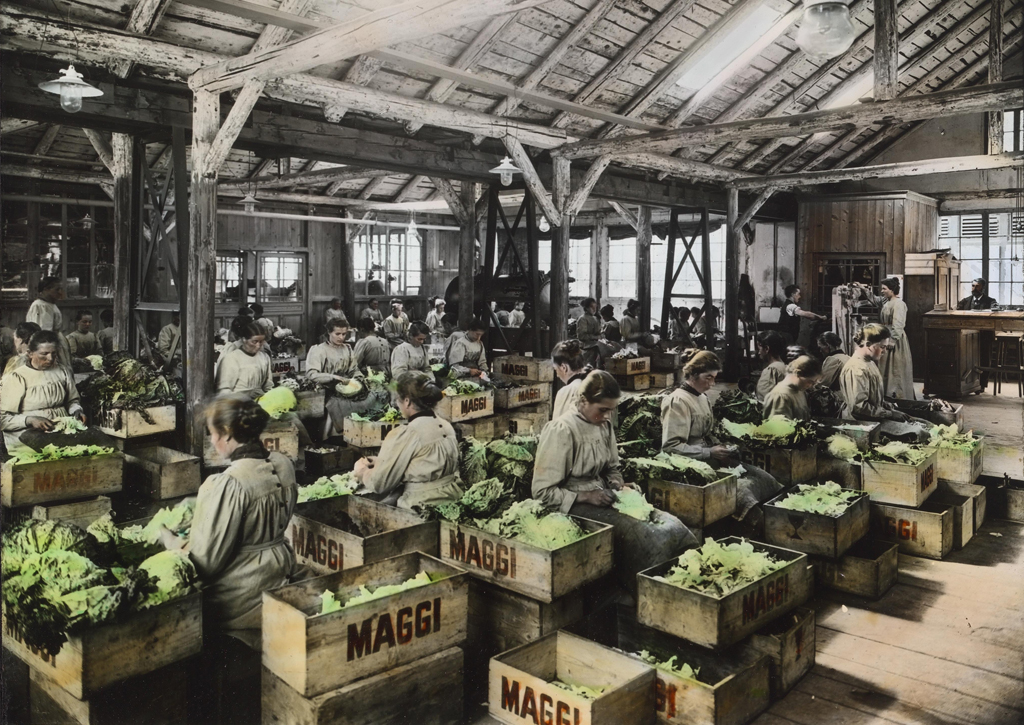Julius Maggi, the founder of the brand that still bears his name, dreamt of creating food products that would become as universal as salt and pepper, foods that would nourish workers for a fair price and a brand that no-one would ever forget.
For him, nothing was too small not to be deeply and fully examined.
Today, the Maggi brand of seasonings, soups and stocks is one of Nestlé’s global billion dollar brands. With the same distinctive red and gold in its packaging and his name known the world over, Julius succeeded even beyond his wildest dreams.
With his company based in Switzerland, Julius Maggi was a perceptive and visionary businessman who could already see the impact of the transformation of the working world on food habits. Women, who traditionally prepared food for their families, were increasingly spending more time in workplaces like factories and less time in their kitchens. Julius realised they would need food that was nutritious, filling and fast. It was in 1882 that he met a doctor as forward-thinking as he. It was an encounter that would transform his company’s future and the way millions cook.
Pulse potential
Dr. Fridolin Schuler was part of the Swiss Public Welfare Society, whose goal was to improve the lives of the country’s working population. Nutritious meat was beyond their meagre budgets but Dr. Schuler was convinced that pulses – rich in nutrients and easy to digest – were the solution.
Inspired by these principles, and seeing a vast potential future market, Julius Maggi set about creating a new type of flour, made from pulses. After two years of research he launched powdered pea and bean flours. These were followed, in 1885, by some of the world’s very first instant soups. Then, in 1886, he launched Maggi seasoning, a concentrated liquid bouillon to form the basis for consommés, soups and sauces. It was among the first of its kind, enhancing and improving the flavour of foods.
Mr. Maggi was an endless innovator, with curry and mock-turtle flavoured instant soups as well as a truffle-flavoured Maggi seasoning, all designed to appeal to the increasingly sophisticated Victorian palate, offered alongside the more traditional vegetable broths.
These products were an immediate success and Maggi began to expand internationally. By 1888, Julius had opened branches or affiliates in Germany, France, Italy, the UK and the US. Maggi finally made its way to Sri Lanka in 1964.
Nestlé Lanka continued Mr. Maggi’s legacy of innovation. In 1986, we decided to put our excess milk powder production capacity to good use and manufacture coconut milk in powder form, offering Sri Lankan housewives tasty convenience. The product, which we marketed under the Maggi brand, used exclusively Sri Lankan coconuts to ensure a fresh and delicious taste.
Maggi Coconut Milk Powder is manufactured by Nestlé exclusively at our factory in Kurunegala today, supplying markets all over the world through Nestlé’s extensive global distribution channels. We are one of the largest exporters of coconut milk powder in the world today.
A bold brand identity
Mr. Maggi also knew the importance of a bold brand identity to capture consumers’ loyalty, and went to great lengths to both protect and publicise his Maggi brand.
By 1900, Julius had registered his signature and variations of his name in various type faces in multiple countries. In Switzerland, he protected no less than 18 different variations of his name – everything from Magi to Magique – to ward off would-be imitators.
Like it is today, Maggi products and publicity material was instantly identifiable through its deep red, golden yellow and black colours from the very beginning.
PR pioneer
Julius invested in advertising too, and was among the first to use enamel placards which were hung outside grocers’ shops. He employed young copywriters and painters, like Leonetto Cappiello - often called "the father of advertising". Many would go on to become famous playwrights, authors and artists.
Julius also recognised the advertising opportunity available on public transport – and so began poster campaigns on trams, railway carriages and, in Paris, even the bateaux-mouches that sailed along the Seine.
Maggi vans gave out free samples of hot soups and bouillons from silver urns on street corners and operated one of the first loyalty schemes for customers, who could earn anything from a coffee machine to a Japanese lacquered cabinet.
The classic Kub
The most iconic of Julius Maggi’s products remains his bouillon cube. He shaped his instant stock into a perfect cube, wrapping it in the brand’s distinctive colours and christening it the Bouillon Kub. He encouraged consumers to “Demand the K!”. It was such a stroke of brilliance it was furiously copied by competitors. Within a few years of its launch it had become such an icon of its time that the Bouillon Kub even appeared in a painting by cubist artist Pablo Picasso.
When the brand was acquired by Nestlé in 1947 it was a natural match. Both Swiss, the two companies shared a pioneering and visionary approach to food.
Maggi today
Just as Mr. Maggi envisioned, his products are now ubiquitous across the continents. And, just as the original dehydrated vegetable soups nourished Europe’s working classes, modern Maggi products in countries like Sri Lanka are now enriched with micronutrients like calcium.
Manufactured at our state-of-the-art factory in Kurunegala, Maggi continues to be the trusted household favourite it has been for generations, winning the hearts of Sri Lankan adults and children alike.






